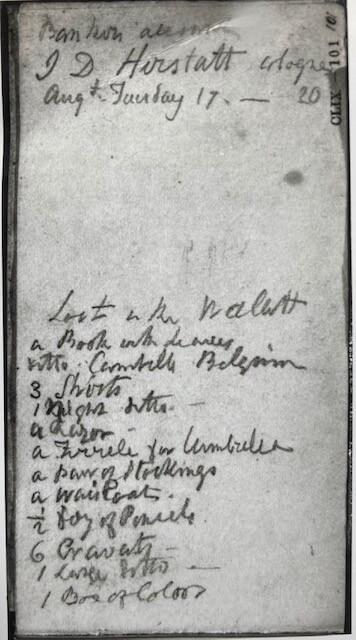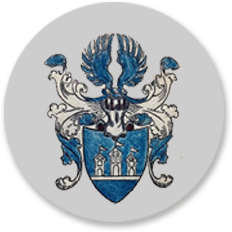The old Herstatt banking house
Founded in 1782, it had its headquarters in Cologne at Hohe Pforte 25- 27 and was successfully managed for four generations until it was closed in 1888 by the early death of Friedrich Johann David Herstatt (1831-1888) for lack of a successor and united with Bankhaus J.H. Stein.

Already during the French era, the bank was able to develop quickly under the leadership of Johann David Herstatt. The great upheavals such as the loss of power of the guilds, civil rights for Protestants, secularisation and thus a growing real estate business were advantageous here.
Johann David Herstatt was appointed Royal Agent at Cologne in 1793, which was very helpful to him in supra-regional business. When Johann David Herstatt died in 1809, his son Friedrich Peter Herstatt (1775-1851) took over the leading role in the banking house, where he had already supported his father since 1800. In addition to the classic bill of exchange business, he also promoted the credit and real estate business in particular. With the advent of the industrial revolution, new opportunities and business fields arose. Now the emerging industrial companies from the textile, mining and metallurgical sectors, railway companies, Rhine shipping, insurance companies and the iron processing industry were important customers of the bank. For example, J.D. Herstatt was Friedrich Krupp’s first and for a long time only banker. Bankhaus J.D. Herstatt was highly committed to the expansion of the railway network, a backbone of industrial progress and prosperity. Companies such as the Rhenish Railway, the Cologne-Minden and the Cologne-Coblenz-Binge, Cologne-Crefeld were supported with capital. The international railway line Cöln- Antwerp of the Rhenish Railway Company, which was also financed, should be mentioned here in particular, because the associated Belvedere station building in Cologne still exists today and can be visited.
In addition to industrial clients, one should not forget private clients and many famous artists as clients of I.D. Herstatt. For example, the bank’s name can be found in a sketchbook by William Turner. Turner probably used the bank during his visits to the Rhineland from 1817 onwards to fill his travel funds.
In the mid to late 19th century, i.e. at the time when his son Johann David Herstatt (1805-1879) and his son Friedrich Johann David Herstatt (1831-1888) took over the leading role in the bank, the bank became increasingly involved in the financing of public loans and was involved in the issuing of numerous state and city bonds as an underwriting bank.

